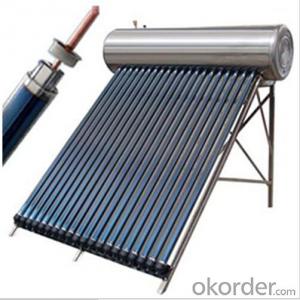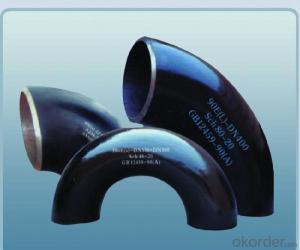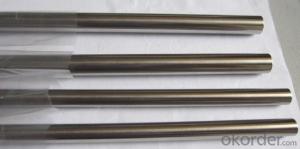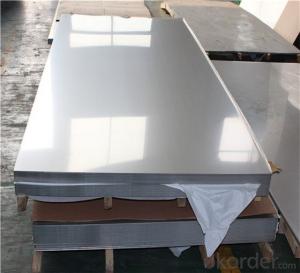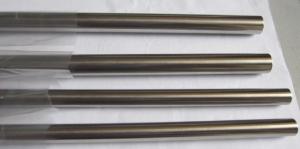Stainless Steel 303
Stainless Steel 303 Related Searches
Best Paint For Stainless Steel Blanket Insulation For Steel Buildings Primer For Galvanized Steel Foam Filter For Stainless Steel H S Code For Stainless Steel Surface Grinding Wheels For Stainless Steel Surface Grinding Wheels For Hardened Steel Hole Saw For Stainless Steel Paint For Stainless Steel Stainless Steel For BbqHot Searches
Steel Mesh Panels For Sale Price For Stainless Steel Scrap Scrap Price For Stainless Steel Price For Stainless Steel Stainless Steel Tank For Sale Stainless Steel Sheets For Sale Cheap High Tea Sets For Sale Stainless Steel Tanks For Sale Stainless Steel For Sale High Density Fiberboard For Sale Solar Hot Water Collectors For Sale Scaffolding For Sale In Uae Scaffolding For Sale In Ireland Scaffolding For Sale In Houston Type Of Inverter For Solar Price Of Shipping Containers For Sale Types Of Inverter For Solar Stock Price For Aluminum Used Solar Inverter For Sale Steel Mesh Panels For SaleStainless Steel 303 Supplier & Manufacturer from China
Okorder.com is a professional Stainless Steel 303 supplier & manufacturer, offers integrated one-stop services including real-time quoting and online cargo tracking. We are funded by CNBM Group, a Fortune 500 enterprise and the largest Stainless Steel 303 firm in China.Hot Products
FAQ
- Indeed, stainless steel pipes are suitable for food processing purposes. The food industry favors stainless steel due to its remarkable resistance to corrosion, remarkable strength, and hygienic features. Its non-reactive nature ensures that it does not interact with food or introduce any flavor or scent. Stainless steel pipes are effortless to clean, sanitize, and upkeep, rendering them appropriate for employment in food processing scenarios where cleanliness and hygiene hold paramount importance. Furthermore, stainless steel pipes exhibit the capability to endure elevated temperatures and pressures, thus making them an ideal choice for a diverse range of food processing activities, including the transportation, storage, and distribution of food products.
- The chemical composition and elements contained in 304H and 316H stainless steel pipes are what sets them apart. 304H stainless steel is a variation of the 304 stainless steel alloy that is specially designed for high-temperature usage. It has a higher carbon content compared to standard 304 stainless steel, which improves its strength and resistance to corrosion at high temperatures. This makes it suitable for environments with elevated temperatures and corrosive substances. On the other hand, 316H stainless steel is a variation of the 316 stainless steel alloy, also intended for high-temperature applications. Like 304H, it has a higher carbon content than standard 316 stainless steel, which enhances its high-temperature strength. However, 316H stainless steel also contains molybdenum, which provides additional corrosion resistance, particularly in environments with chlorides like seawater or marine settings. To summarize, both 304H and 316H stainless steel pipes are suitable for high-temperature applications, but 316H offers better corrosion resistance due to the inclusion of molybdenum. The choice between the two depends on the specific requirements of the application, such as the presence of corrosive substances or chlorides in the environment.
- The main difference between 347 and 316 stainless steel pipes is their composition and intended usage. 347 stainless steel contains higher amounts of niobium and tantalum, which make it more resistant to intergranular corrosion and higher temperatures. This makes it suitable for applications in high-temperature environments, such as heat exchangers, boiler tubes, and exhaust systems. On the other hand, 316 stainless steel is more commonly used for general-purpose applications due to its excellent corrosion resistance, good mechanical properties, and cost-effectiveness.
- To prevent clogging in stainless steel pipes, regular maintenance is essential. This includes flushing the pipes with hot water regularly to remove any potential buildup. Additionally, avoiding the disposal of grease, oil, or large solid particles down the drain is crucial. Installing screens or traps at the drains can also help to catch any debris before it enters the pipes.
- Several factors need to be considered when calculating the bending radius of stainless steel pipes. These factors include the diameter of the pipe, the wall thickness, and the specific type of stainless steel being utilized. To begin, one must determine the outside diameter (OD) of the pipe. This can be achieved by directly measuring it or by referring to the pipe specifications. Following this, the wall thickness of the pipe should be identified. This information can be found in the pipe specifications or measured using a caliper. Once the OD and wall thickness are known, it is possible to calculate the inside diameter (ID) of the pipe. This can be done by subtracting twice the wall thickness from the OD. This calculation accounts for the even distribution of the wall thickness on both sides of the pipe. Having obtained the ID, the bending radius can now be calculated. Usually, the bending radius is expressed as a multiple of the pipe's OD. A general rule of thumb for stainless steel pipes is that the bending radius should be at least three times the OD. However, this value may vary depending on the specific application and the type of stainless steel being used. It is important to note that bending stainless steel pipes beyond their recommended bending radius can result in deformation, cracking, or failure. Therefore, it is crucial to adhere to the manufacturer's guidelines and seek advice from an engineer or an experienced professional in working with stainless steel pipes to ensure accurate calculations.
- Polyethylene can indeed be used to line stainless steel pipes. It is a widespread practice in numerous industries, such as oil and gas, chemical processing, and water distribution. The utilization of polyethylene lining brings forth numerous advantages, including corrosion resistance, enhanced flow capacity, decreased friction, and improved chemical resistance. The process itself entails the insertion of a polyethylene liner into the stainless steel pipe, followed by heating and expanding it to achieve a secure fit. This lining method effectively shields the stainless steel pipes against corrosion and prolongs their durability.
- When comparing stainless steel pipes to ductile iron pipes, there are several factors to consider. Firstly, stainless steel pipes have a higher resistance to corrosion compared to ductile iron pipes. This is due to the presence of chromium in stainless steel, which forms a protective layer on the surface of the pipe, preventing rust and corrosion. Ductile iron, on the other hand, is more prone to corrosion and may require additional coatings or linings to protect against it. Secondly, stainless steel pipes have a higher strength-to-weight ratio than ductile iron pipes. This means that stainless steel pipes can withstand higher pressure and have a longer lifespan, making them more durable and reliable. Ductile iron pipes are also strong, but they are generally heavier, which can make installation more challenging. Another important factor to consider is the cost. Stainless steel pipes tend to be more expensive than ductile iron pipes, primarily due to the higher cost of raw materials and manufacturing processes. However, the longer lifespan and lower maintenance requirements of stainless steel pipes can offset this initial cost, making them a cost-effective choice in the long run. In terms of versatility, stainless steel pipes offer more flexibility in terms of design and application. They can be easily welded, bent, and fabricated to meet specific requirements. Ductile iron pipes, on the other hand, have limited flexibility and are typically used for underground water and sewage systems. Overall, both stainless steel and ductile iron pipes have their own advantages and disadvantages. The choice between them will depend on factors such as the specific application, budget, and desired lifespan.
- Yes, stainless steel pipes can be used for drinking water supply. Stainless steel is a highly durable and corrosion-resistant material, making it a suitable choice for transporting drinking water safely and hygienically. Unlike other materials, stainless steel pipes do not leach harmful chemicals or contaminants into the water, maintaining its quality and purity. Additionally, stainless steel pipes are resistant to bacterial growth, which further ensures the safety of the drinking water.























